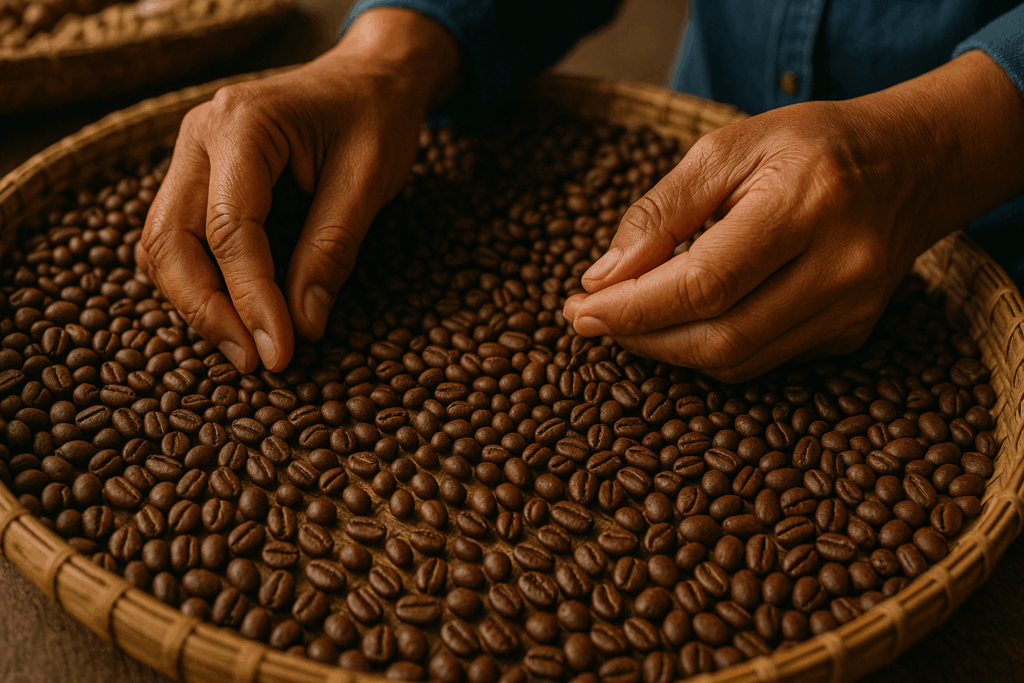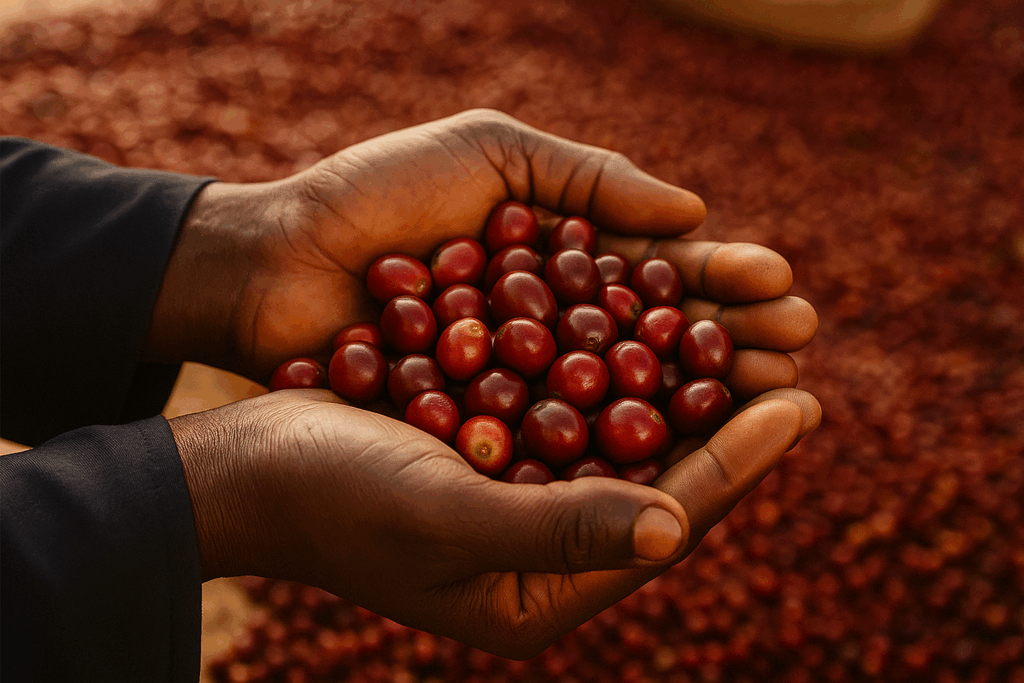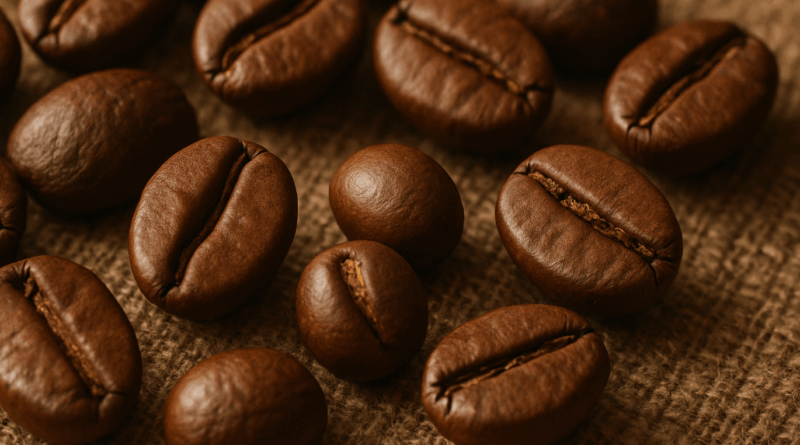Peaberry Coffee: What Makes This Rare Bean Worth Trying
There’s something undeniably intriguing about a coffee bean that looks different, costs more, and comes with a whisper of mystery. That’s the case with peaberry coffee. Some call it nature’s little surprise, others see it as a gem quietly waiting to be discovered by curious coffee drinkers. But what exactly makes it so special—and is the hype really justified?
What Exactly Are Peaberry Coffee Beans?
Most coffee cherries grow with two seeds inside—flat on one side, rounded on the other. That’s the standard coffee bean you’ve seen a thousand times. But in about 5% of all harvested cherries, something different happens: only one seed develops. This solo seed grows rounder and denser than its typical counterpart. That’s a peaberry.
Peaberry beans aren’t a separate variety of coffee. They’re more like a natural twist—an occasional variation that happens in the same plant. But because of their distinct shape and rarity, they’re often sorted out and sold separately, fetching higher prices and capturing the attention of coffee lovers who seek unique and memorable brews.
One of the most noticeable things about peaberry beans is their shape. They’re small, round, and slightly more symmetrical. This difference isn’t just aesthetic—it’s also the reason why some claim they roast better and taste brighter.

Why Are They So Rare and Valued?
The rarity of peaberry beans is part of their charm. Since only around 5% of beans in any harvest are peaberries, finding them requires careful sorting. This selective process—often done by hand—adds to their perceived value. But it’s not just about rarity. Some roasters argue that peaberry beans roast more evenly thanks to their shape. Their smooth, round surface allows for a more consistent heat distribution inside the roasting drum. In theory, this should lead to a cleaner, more vibrant cup.
Now, does that always translate into a dramatically better taste? The answer is nuanced. Some coffee lovers swear by peaberry’s livelier acidity and silkier mouthfeel. Others argue that origin, processing, and roast level matter far more than the shape of the bean. Still, it’s undeniable that peaberry selections often feel like a “premium” experience—especially for those who love to explore sophisticated brews.

Flavor Profiles and Regions That Produce Peaberry
While peaberries can occur in any coffee-growing country, they’re especially associated with certain origins. Tanzania is perhaps the most iconic producer. Tanzanian peaberry coffee often brings bright citrus notes, medium body, and a clean finish. If you’ve come across a bag labeled “Tanzanian Peaberry,” there’s a reason—it’s now recognized as a distinct and celebrated coffee style.
Other well-known peaberry-producing regions include Kenya, known for bold, berry-like acidity with complex sweetness; Colombia, which offers balanced flavor with nutty and chocolatey notes; and Hawaii (particularly Kona), where peaberry coffee is smooth and mellow, with a hint of spice.
Because peaberry beans grow on the same trees as regular beans, their flavor is still heavily influenced by the unique growing conditions of each region. In other words, a peaberry from Colombia won’t taste like one from Kenya. It will still carry the signature characteristics of its origin—but some say in a slightly more concentrated form. Since peaberry beans come from the same plants as regular beans, their flavor still reflects their origin—especially if it’s in one of the world’s key coffee belt regions.

Brewing Peaberry Coffee: Is It Any Different?
You don’t need special gear to enjoy peaberry coffee—but a few adjustments can help you get the most out of its flavor. Since peaberries are often denser, they may benefit from a slightly finer grind, especially if you’re using manual brewing methods like pour-over or AeroPress.
Pour-over methods are especially good at showcasing peaberry’s clarity and brightness. If you’re into slow, intentional brewing, this could be the perfect way to enjoy it. That said, peaberry also works well in a French press or even espresso, depending on the roast.
Is It Worth the Hype (and the Price)?
Peaberry coffee often comes with a higher price tag—and not just because it sounds fancy. The extra sorting required, the smaller yields, and the perception of rarity all play into its cost. But the real question is: does it taste better?
That depends on what you’re after. For newcomers to specialty coffee, the difference between peaberry and regular beans might feel subtle. But for those who have already explored various origins, roast levels, and brew methods, peaberry can offer a fresh and interesting perspective—with a body that feels smoother, acidity more pronounced, and a cleaner finish.
The real charm, though, lies in the story and craft. Many coffee drinkers see peaberry as a window into the complexity of coffee—how even tiny natural variations can shift what ends up in your cup. If discovering unique, small-batch or single-origin coffees excites you, then peaberry might just be the next memorable cup you didn’t know you were missing.
And if you’re already investing in premium beans like peaberry, you might also be curious about what’s actually in your daily cup. Our guide to coffee nutrition facts breaks it down.

Should You Give Peaberry Coffee a Try?
If you love discovering new layers in your coffee ritual, peaberry beans can be a surprisingly delightful path to explore. They’re rare, visually unique, and often come with a richer story than your average cup. While the flavor differences might not be life-changing, they can offer a fresh and rewarding experience—especially when sourced from top-growing regions like Tanzania or Colombia.
Peaberry coffee isn’t just about taste—it’s about discovery. It’s about paying attention to what’s small, different, and quietly exceptional. For those who find meaning in the ritual and joy in the details, this rare little bean offers more than just a new flavor—it offers perspective. So yes—if you’re ready to be surprised by something subtle yet unforgettable, peaberry coffee might just change the way you think about your daily brew.

